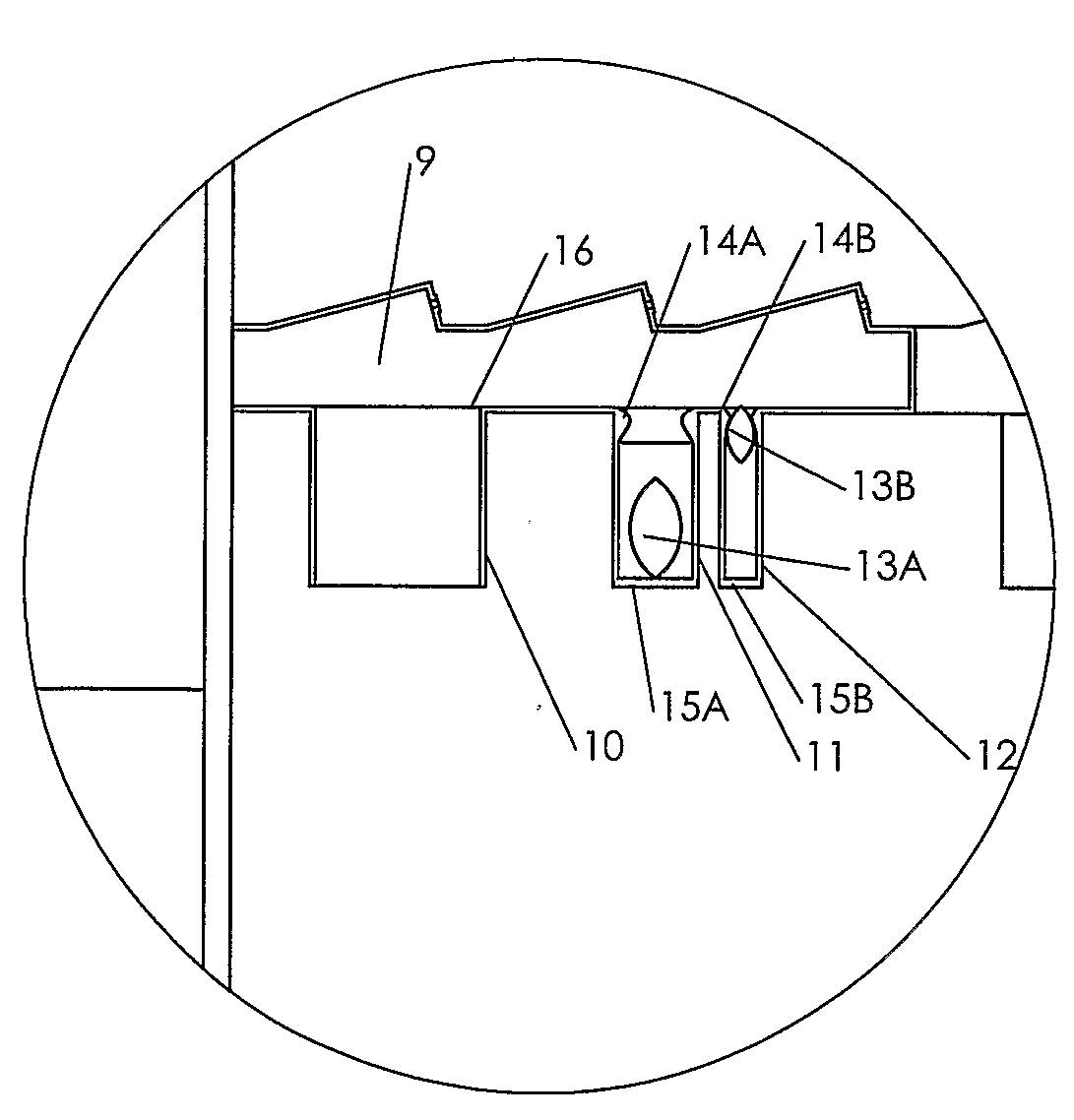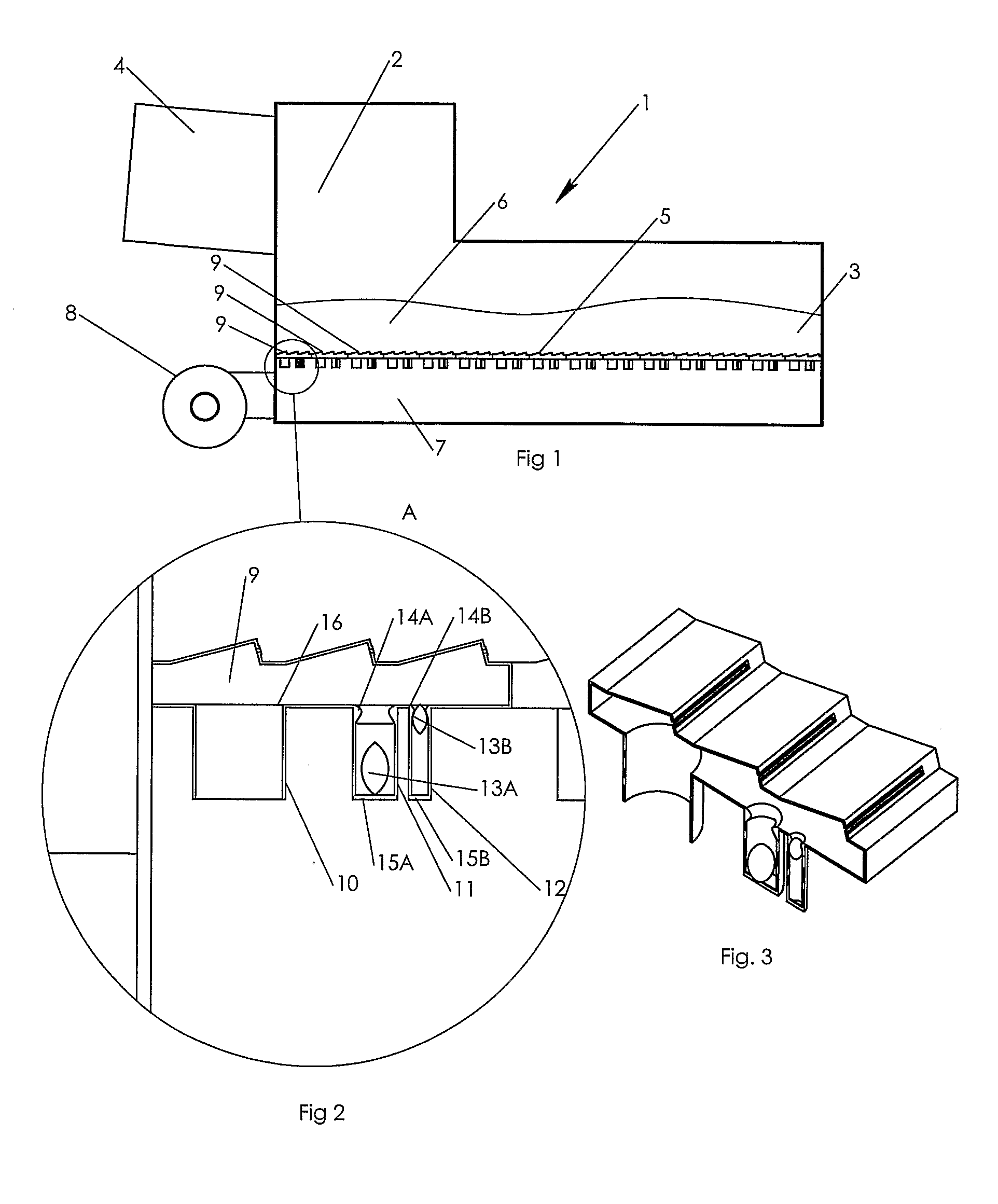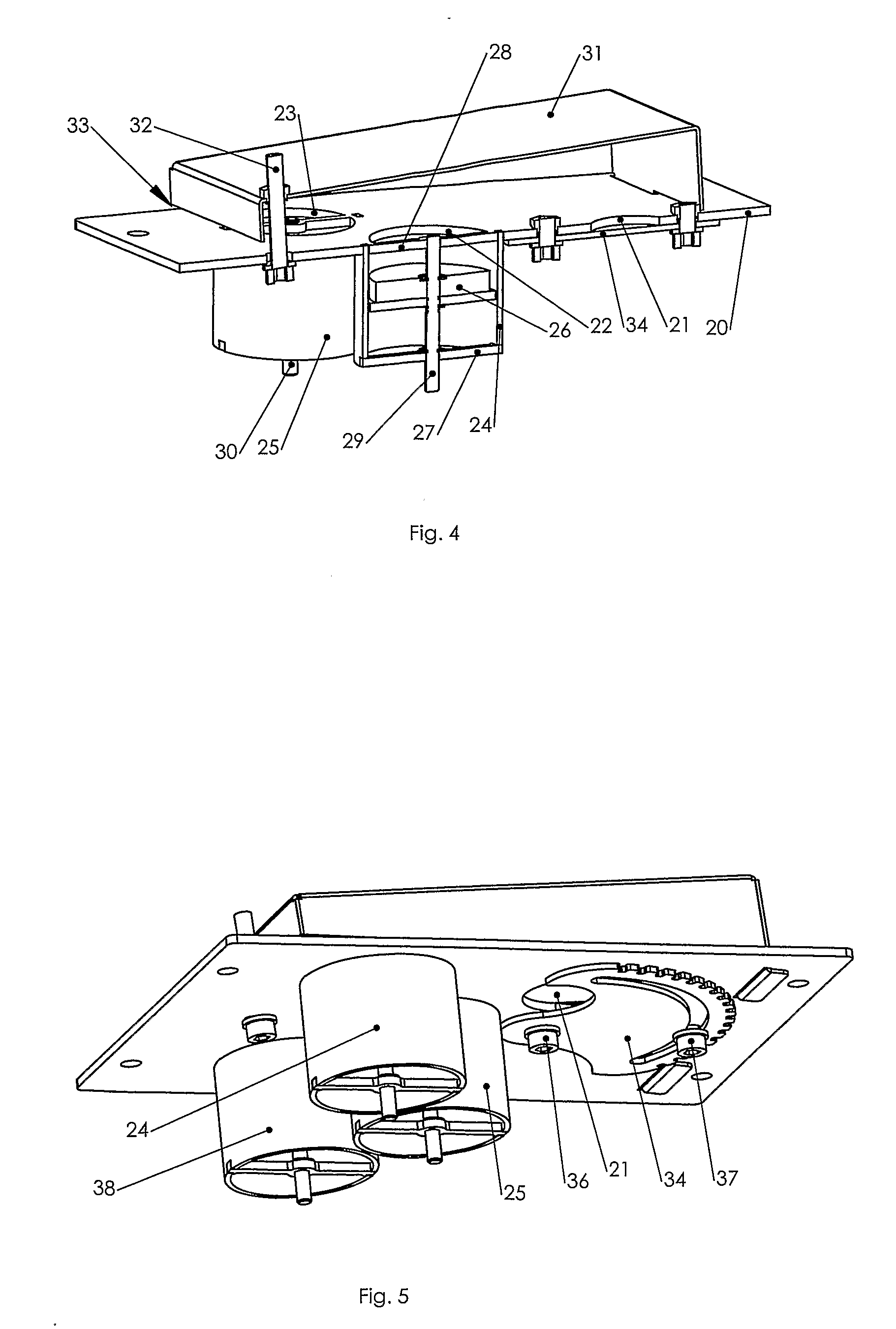Articulated Joint with Adjustable Stiffness
- Summary
- Abstract
- Description
- Claims
- Application Information
AI Technical Summary
Benefits of technology
Problems solved by technology
Method used
Image
Examples
Embodiment Construction
[0039]In FIG. 1 is shown a cooler 1 which comprises an inlet end 2 and an outlet end 3. The cooler is connected to a rotary kiln 4 from which it receives hot material which is to be cooled. The material from the rotary kiln drops onto a distribution bottom 5 provided in the cooler 1 and it is conveyed as a material layer 6 on the distribution bottom 5 from the inlet end 2 to the outlet end 3 of the cooler 1 by means of transport—not shown. The means of transport could, not limited to, be: reciprocating grates, reciprocating bars or a walking floor principle. Under the distribution bottom 5 the cooler 1 comprises of one or more compartments 7, where each is supplied with cooling air from a fan installation 8. The compartment 7 may both in the longitudinal direction of the cooler and transversely hereof, be divided into a number of smaller compartments, not shown, and, if so, cooling air is supplied to each single compartment. The distribution bottom 5 is sectionalised in a number of ...
PUM
| Property | Measurement | Unit |
|---|---|---|
| Length | aaaaa | aaaaa |
| Fraction | aaaaa | aaaaa |
| Fraction | aaaaa | aaaaa |
Abstract
Description
Claims
Application Information
 Login to View More
Login to View More - R&D
- Intellectual Property
- Life Sciences
- Materials
- Tech Scout
- Unparalleled Data Quality
- Higher Quality Content
- 60% Fewer Hallucinations
Browse by: Latest US Patents, China's latest patents, Technical Efficacy Thesaurus, Application Domain, Technology Topic, Popular Technical Reports.
© 2025 PatSnap. All rights reserved.Legal|Privacy policy|Modern Slavery Act Transparency Statement|Sitemap|About US| Contact US: help@patsnap.com



